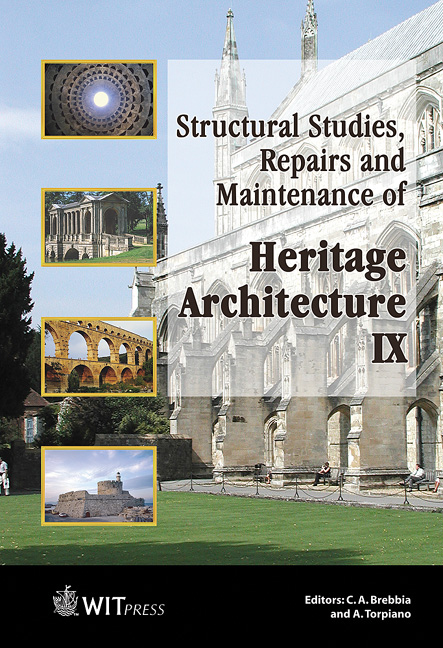Seismic Vulnerability Assessment And Structural Improvement Proposals For The Building Typologies Of The Historic Centers Of Vittorio Veneto (Italy)
Price
Free (open access)
Transaction
Volume
83
Pages
10
Published
2005
Size
3,255 kb
Paper DOI
10.2495/STR050311
Copyright
WIT Press
Author(s)
M. R. Valluzzi, A. Bernardini & C. Modena
Abstract
This vulnerability study of the historical centres of Vittorio Veneto (TV, Italy) aimed at suggesting compatible solutions of structural improvement in seismic areas. Macro-modelling using kinematics models has been adopted by using a computational procedure set up at the University of Padova in the 1980s (Vulnus) and recently updated in Visual Basic ambient. Several building typologies have been identified in the study and the main characters affecting their vulnerability are discussed here. Keywords: seismic vulnerability, masonry, building typologies, colonnades, macro-modelling, limit analysis, kinematics mechanisms. 1 Introduction Historic structures in seismic areas are characterized by several typologies, especially in minor urban centres, where continuous stratification and superposition occurred during time. Isolated and arrays of buildings, complex aggregates, often located on slopes, can be found. Moreover, existing buildings may have construction features that can induce specific vulnerability problems such as: arcades, loggias and colonnades, large halls. The large variability of the masonry material and the low effectiveness of structural connections among components (walls, floors and roofs), make the assessment of the seismic vulnerability of this class of buildings a particularly hard task. In such a context, common procedures usually adopted for structural evaluations based on the box-
Keywords
seismic vulnerability, masonry, building typologies, colonnades, macro-modelling, limit analysis, kinematics mechanisms.




